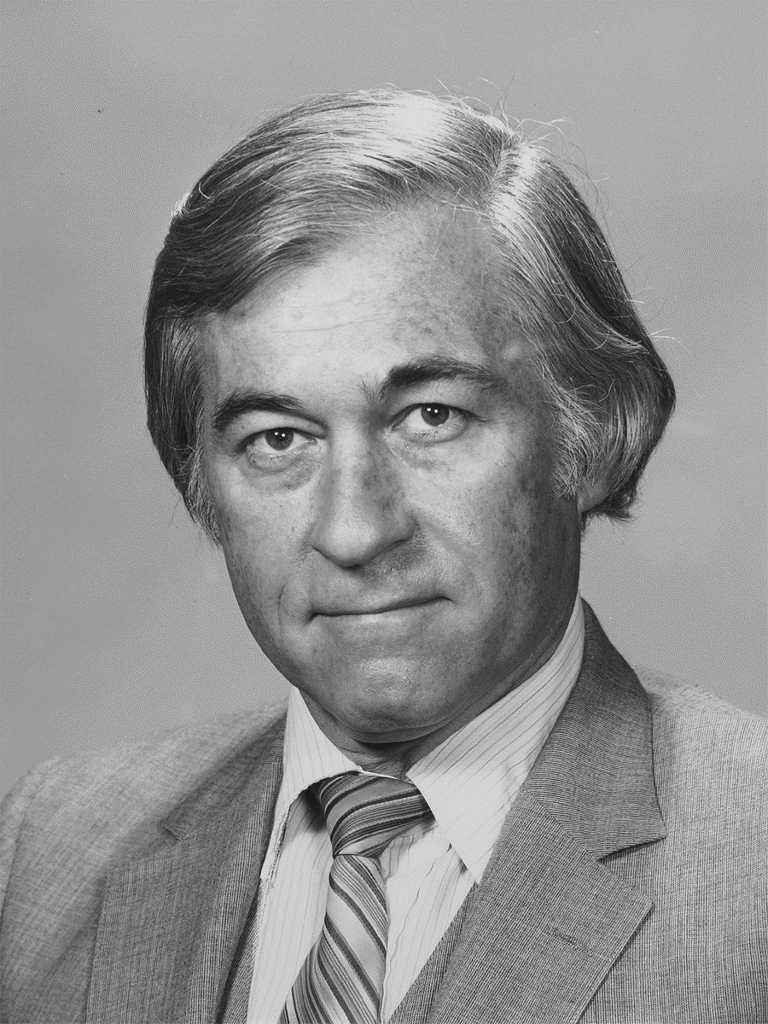Robert P. Madden
About Optica
In Memoriam: Robert P. Madden, 1928-2014, OSA Past President
01 April 2014
Robe rt P. Madden, an OSA Past President and Fellow Emeritus who was a long-time staff member at the National Bureau of Standards (NBS), now the National Institute of Standards and Technology (NIST), died on 1 April 2014 after a prolonged illness. He was 86.
rt P. Madden, an OSA Past President and Fellow Emeritus who was a long-time staff member at the National Bureau of Standards (NBS), now the National Institute of Standards and Technology (NIST), died on 1 April 2014 after a prolonged illness. He was 86.
Bob Madden was born in 1928, spent his early years in Schenectady, NY, and attended Rochester University as an undergraduate. He undertook his postgraduate work on the ruling and use of diffraction gratings for the infra-red at the Johns Hopkins University, under the supervision of Professor John Strong. After receiving his doctorate in 1956, he served as a physicist with the U.S. Army Engineering Research and Development Laboratories (AERDL) at Fort Belvoir, VA from 1958-1961. There he developed instrumentation for, and made measurements on, the optical properties of thin films in the vacuum ultraviolet region.
In 1961 Madden joined NBS as Section Chief of the newly-formed Far Ultraviolet Physics Section, with the task of developing programs to use the far ultraviolet radiation emitted by the NBS 180 MeV electron synchrotron as a radiation standard for that region of the spectrum, and to explore the excitation spectra of various gases and solids using the synchrotron as a source of pure continuum radiation. Up until that time, synchrotron radiation was mostly viewed as a drawback in the operation of a particle accelerator, necessitating design constraints to minimize the energy carried away by the radiation. With the advice of Ugo Fano, Madden, along with Keith Codling, carried out a path-breaking experiment that determined the energies and photoionization cross sections of the two-electron excitation states of helium. This was the first real demonstration of the unique potential of synchrotron radiation as a powerful tool for physics in the ultraviolet and x-ray regions of the spectrum. These pioneering experiments were in no small way a stimulus to the rapid growth in the use of synchrotron facilities worldwide.
In 1966 the flow of research publications was interrupted by the move of NBS from Washington, DC to suburban Gaithersburg, MD, where the synchrotron was reinstalled and used exclusively as a source of far ultraviolet and soft x-rays. It was here that Madden applied his great expertise in optics to the design and installation of several beam lines and their associated monochromators for use in the fields of atomic, molecular and solid state physics. In 1970, with Madden’s encouragement, a heat pipe was introduced into the beam line by Thomas Lucatorto and David Ederer and the excitation spectrum of lithium vapour near the K absorption edge was obtained for the first time.
The application of synchrotron radiation as an absolute radiometric source for the far ultraviolet remained a priority. Indeed, in 1974, under Madden’s guidance, the synchrotron’s energy was increased from 180 MeV to 240 MeV and the synchrotron was reconfigured into a storage ring, and SURF-II was born. Madden provided the administrative guidance and support to develop further the quality of the radiation emitted by SURF-II, making it a productive calibration source for a broad range of users that included NASA and National Laboratories as well as universities. Moreover, in the late 1970’s, owing to improvements in electron beam current and cross section, photoelectron spectrometers and soft x-ray spectrometers could be added and triply differential cross sections could be determined by Al Parr, Joe Dehmer and their collaborators.
Madden continued to encourage improvements at SURF-II in the form of higher injected currents and more stable and reliable electron beams. Ultimately SURF-III was installed in 1998 as a storage ring of 340 MeV energy that allowed measurements to be made up to photon energies of almost 1 keV. Madden suggested that this was his “last hurrah.”
Madden retired from
A member of The Optical Society since 1958, Madden was named an OSA Fellow in 1964 and received the William F. Meggers Award in 1978. He served as OSA president in 1982. Madden was also a fellow of the American Physical Society and the recipient of the NBS Silver Metal (1964) and Stratton Award (1970). He was inducted into the NIST Gallery of Distinguished Scientists, Engineers and Administrators in 2000.
If you would like to make a memorial donation to an OSA Foundation fund or endowment in honor of Robert P. Madden, please visit www.osa.org/donate.
This obituary was contributed by Keith Codling, Reading University, England; David Ederer, Tulane University, USA; Thomas Lucatorto, National Institute of Standards and Technology, USA; and Albert Parr, National Institute of Standards and Technology, USA.
